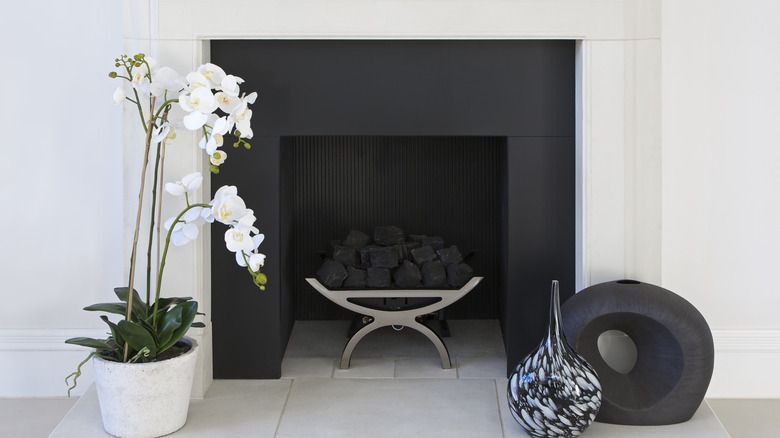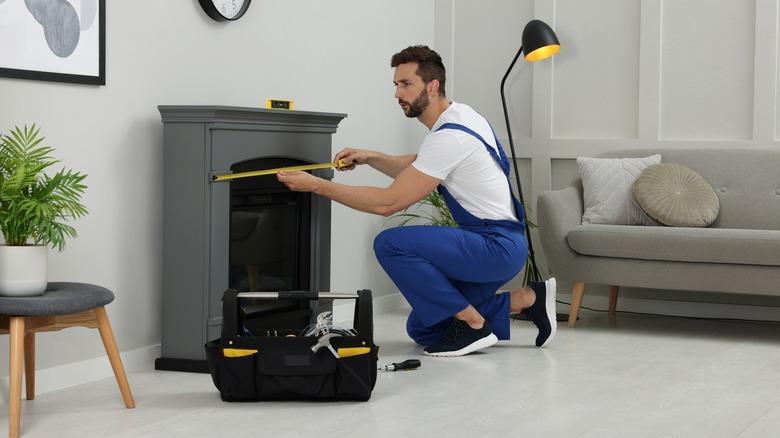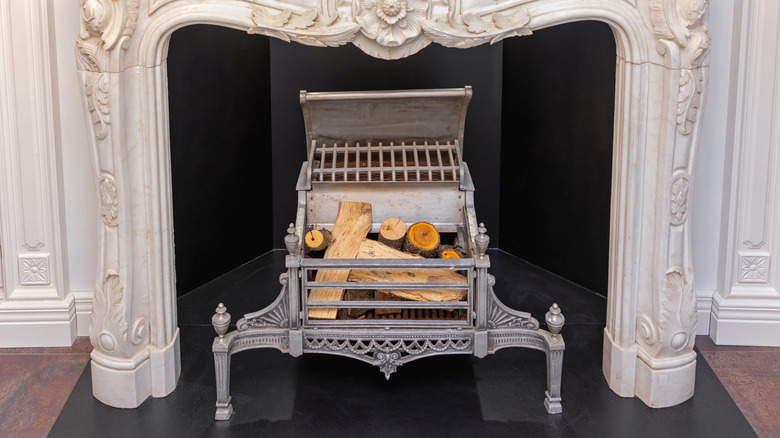What To Look For When Buying A Fireplace Grate
A grate is essential for an open fireplace since it lifts the wood or coal off the floor and allows oxygen to flow in from all sides, ensuring the logs or pellets burn down efficiently. This accessory also protects your hearth floor from heat damage, and its shape prevents stacked logs from rolling out and leading to accidents. Given its importance, it's crucial to take a few factors into consideration when buying a fireplace grate. To illustrate, you'd want to determine the size of your hearth to ascertain if the basket actually fits in the designated spot. Similarly, the type of fuel you use will help you choose between steel and cast iron so you can pick the right material.
You must also consider the weight, shape, number of bars, and mesh features prior to ordering one. Moreover, its height will help you slide an ashtray beneath to gather the ash and clean your fireplace easily. The finish of the basket is another important criterion. For instance, a grate in black will retain its appearance for longer than one with a glossy finish.
Choosing the right material and size
Fireplace grates are usually made of steel or cast iron. However, choosing between the two depends on several factors, like the type of fuel you use, whether you will use the basket indoors or outdoors, and your budget constraints. If you mostly use firewood, a steel grate would be more suitable for your needs, given its wide bars. Plus, they're more budget-friendly than cast iron pieces. But, since these baskets are constructed from multiple square pieces, they have a shorter lifespan and don't retain heat well.
Comparatively, cast iron can work for both coal and wood since they are made from a single chunk of metal, feature narrower gaps, are relatively sturdier and heavier, support heat retention, keep logs and pellets burning longer, and can withstand high temperatures with ease. But these benefits come at a higher price point. Generally, this type of basket is a better fit for indoor use, while steel grates are an excellent choice to elevate outdoor fire pits. After you've decided on the material, it's time to break out the measuring tape and calculate the rear and front width of the fireplace along with its depth to determine the size of the grate you can buy — deduct 6 inches from those measurements to ensure optimal airflow.
Other factors to consider
While material and size are important, there are some other factors you must consider. For starters, pick a basket that's relatively heavier and sturdier to be sure of its durability. However, don't choose something that'd be impossible to lift or move out of the fireplace. The same logic applies to the number, mass, and width of bars. Try to pick grates featuring numerous broad and heavy bars to provide maximum support for the firewood and coal pellets and ensure the basket can withstand heat from the fire on a regular basis.
Don't forget to account for the shape of the grate. While you can go with any shape that suits your decor, picking one with a curved design will prevent the burning logs from rolling off the basket and make it easier for the unburned logs to take center stage, so you don't have to tend to the fire with a poker as often. Finally, look for a grate with a mesh feature to ensure the burned-down logs or pellets don't fall through the bars and burn down to the last dregs.


